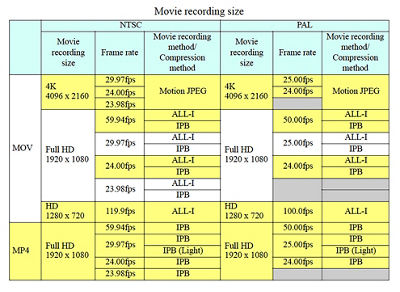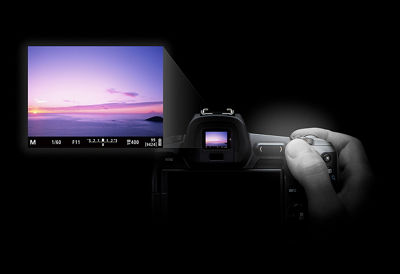Ever since the EOS 5D Mark II was introduced — when Full HD shooting was first made possible on an SLR camera — the EOS 5D series cameras and EOS Movie have become essential assets in the production industry — everything from YouTube uploads to Hollywood blockbusters. Now, with this new model, the much anticipated EOS 5D Mark IV, video shooting inherits not only the rich 5D tradition, but also continues to build on its video legacy. The 5D Mark IV also incorporates some of the best video acquisition features from several of the latest EOS camera models — integrating those into its design and operations like no other model to date.
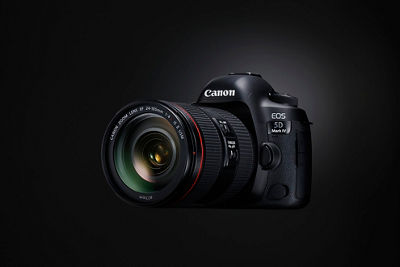
The 5D Mark IV employs many ‘firsts’ for the 5D camera series that significantly improve its video production capabilities: it is capable of shooting high quality 4K video, Full HD up to 60fps, and includes a high speed movie mode of 120fps. It’s the first 5D with 4K frame capture, and built-in Wi-Fi® for easy file sharing; the first with an interactive LCD touch panel; and the first to employ Dual Pixel CMOS Autofocus. Many ‘firsts,’ for sure, but it’s also packed with many more extras to meet demanding video production requirements.
Read on to learn more about how the EOS 5D Mark IV captures video, and take a closer look at its significant video capture functions, improved operability, and important feature upgrades over its popular predecessor.
The EOS 5D Mark IV’s sensor has 30.4 million effective pixels on its full-frame (approx. 36mmx24mm) sensor. This newly-developed sensor – manufactured in-house by Canon — not only contains more pixels, but has also been improved from the 5D Mark III with new photodiode construction and new color filters. Overall, it achieves a good balance between a high pixel count, high resolution and high-speed signal reading.
New noise reduction processing enables higher sensitivity; the ‘normal’ ISO speed settings are 100 – 25600 for Full HD and 100 – 12800 for 4K — and ISO settings are expandable, up to 102400!
The EOS 5D Mark IV shoots DCI 4K -- which is (4096x2160) or (17x 9) high-resolution video at 23.98p, 24.00p, 25.00p and 29.97p.
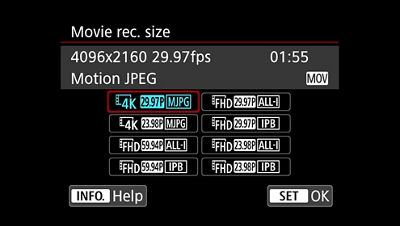
The 4K files are recorded as Motion JPEG, the same 4K compression method found in the EOS-1D X Mark II and EOS-1D C. This CODEC produces a separate JPEG image for each frame of video. It’s a very high quality file recorded at approximately 500 Megabits per second.
The 4K movie area is 4096x2160, and this is recorded off the center of the full image sensor. So, as with the EOS-1D X Mark II and EOS-1D C, when you record 4K video, you’re in effect cropping the full-frame view. However, it should be pointed out that the 1D X Mark II and 1D C both have a different pixel size than the 5D Mark IV, which results in a different 4K field-of-view, even if they’re shot at the same focal length.
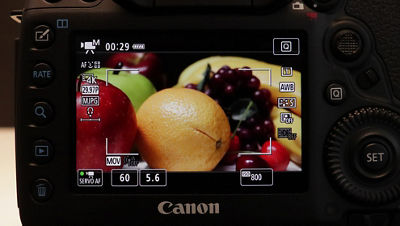
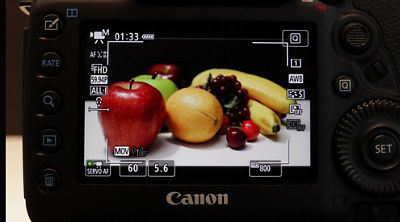
Because of the pixel density on the 5D Mark IV’s 30.4MP sensor, which results in a smaller pixel, its 4K ‘crop factor’ is equivalent to that of a lens with approximately 1.74X the indicated focal length. Shooting 4K would be similar to what you’d see while shooting on an APS-C sensor size camera like an EOS 7D Mark II. As an example, a 50mm lens in Full HD video mode will roughly be equivalent to a 85mm lens when shooting 4K.
Full HD, 1080p video, remains a very important recording medium for many camera operators. The 5D Mark IV Shoots MPEG 4 AVC/H.264 FHD (1920x1080) video at 23.98, 29.97P same as with the 5DIII, but it adds “true” 24P, and 60P (the equivalent PAL frame rates of 25.00p and 50p are available as well).
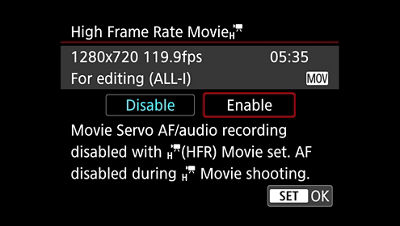
And now you can shoot in either MP4 – which is another first for the 5D series — or .MOV format. ALL-I, IPB, and IPB Light compression methods are available, and for everyone asking for a good slow motion frame rate, it includes an HD High Frame Rate movie shooting mode of 120P (NTSC) or 100fps (PAL) @ 720p
Here is the complete list of movie-recording options available.
